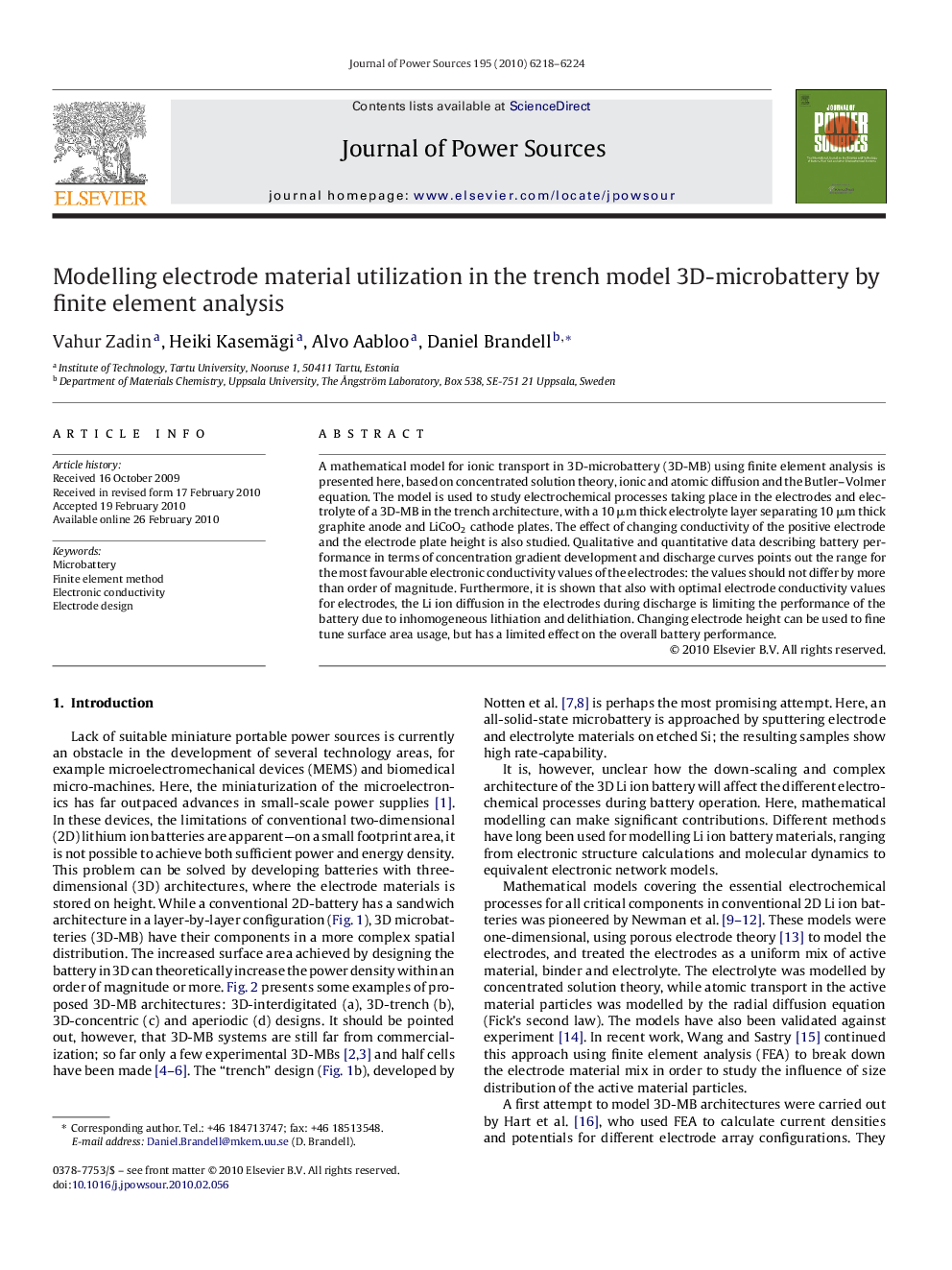| Article ID | Journal | Published Year | Pages | File Type |
|---|---|---|---|---|
| 1289032 | Journal of Power Sources | 2010 | 7 Pages |
A mathematical model for ionic transport in 3D-microbattery (3D-MB) using finite element analysis is presented here, based on concentrated solution theory, ionic and atomic diffusion and the Butler–Volmer equation. The model is used to study electrochemical processes taking place in the electrodes and electrolyte of a 3D-MB in the trench architecture, with a 10 μm thick electrolyte layer separating 10 μm thick graphite anode and LiCoO2 cathode plates. The effect of changing conductivity of the positive electrode and the electrode plate height is also studied. Qualitative and quantitative data describing battery performance in terms of concentration gradient development and discharge curves points out the range for the most favourable electronic conductivity values of the electrodes: the values should not differ by more than order of magnitude. Furthermore, it is shown that also with optimal electrode conductivity values for electrodes, the Li ion diffusion in the electrodes during discharge is limiting the performance of the battery due to inhomogeneous lithiation and delithiation. Changing electrode height can be used to fine tune surface area usage, but has a limited effect on the overall battery performance.
